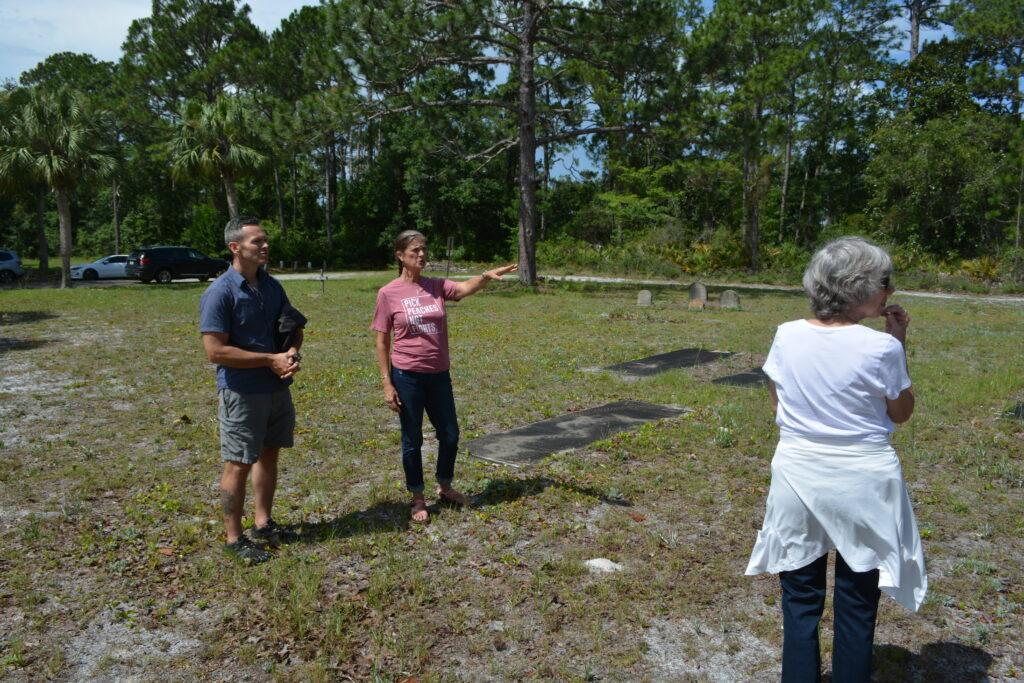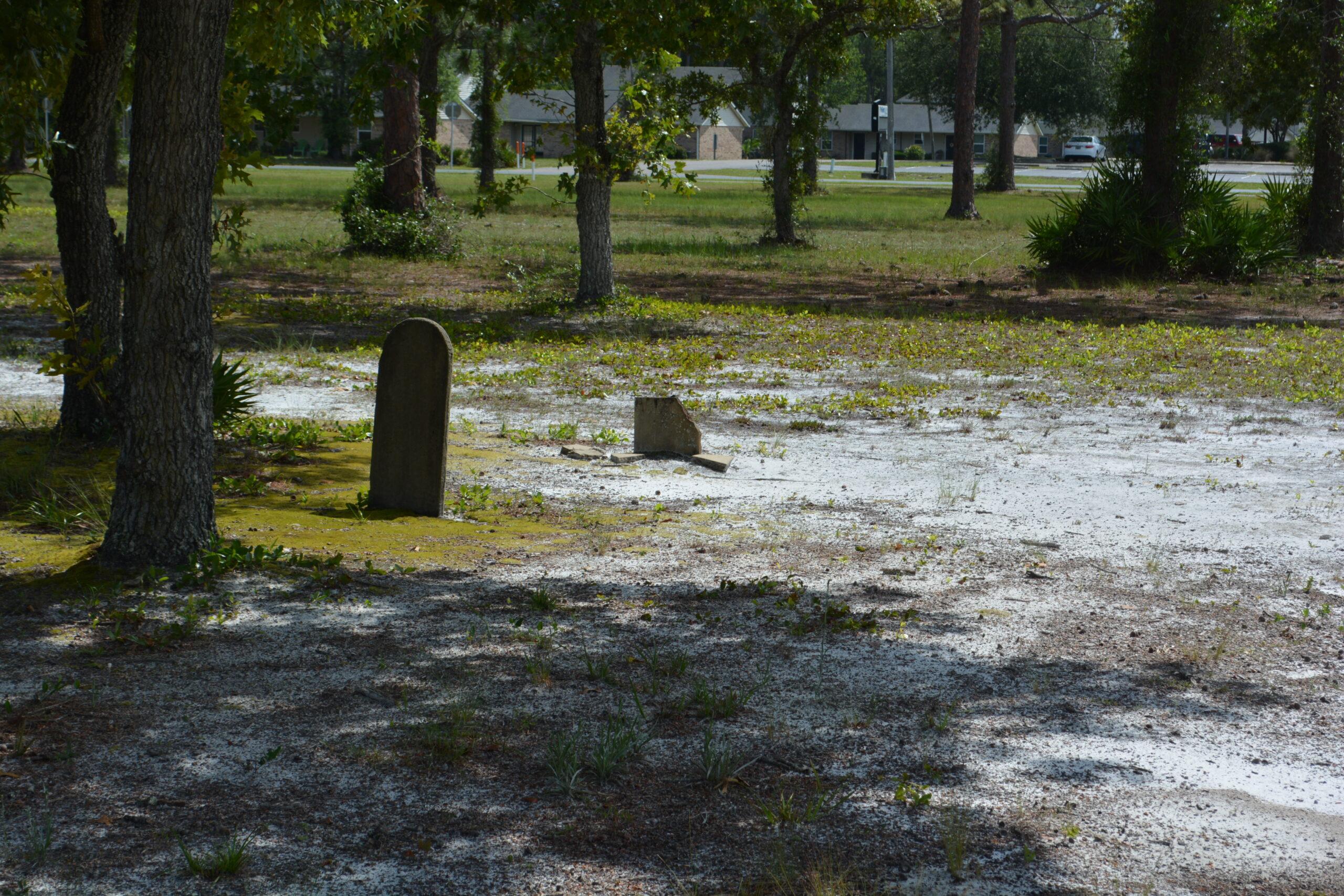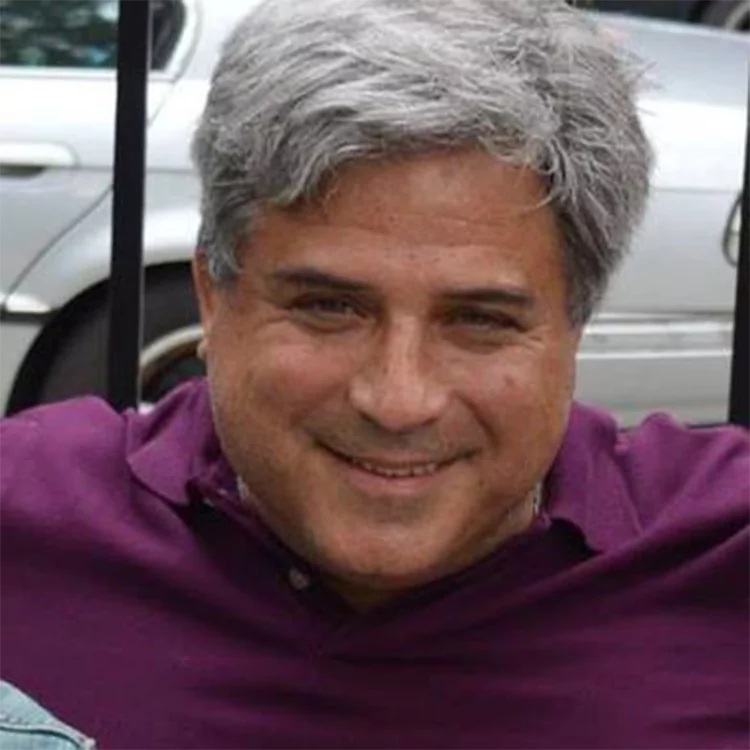‘Someday we’ll get to know where the graves are’: Across the county, residents seek to restore historic cemeteries
Clarence Monette recognized the symbol carved into the remaining headstones — three connected triangles bearing the letters FCB — friendship, charity and brotherhood.
The same symbol sits on his baseball cap, which he wears nearly every day, a marker for the Knights of Pythias, a fraternal organization that has been active in Port St. Joe’s Black community for more than 100 years.
Only a few of the headstones at the historic African American cemetery, which bears no official name, included the Knights of Pythias’ marker, Monette said. But it made him feel connected to the place, a connection that would eventually lead to a decade-long effort to discover the forgotten names of those who had been laid to rest there.
“This was the Black cemetery, and the earliest burials I can find from there were in 1926, but I understand from reading about it that during the Yellow Fever and that part of the history of Port St. Joe, some Blacks were buried over there, and often when they had the fever, they were buried in trenches,” Monette said.
“The only ones that I can see that I know sort of who they are and where they’re buried — I saw a few symbols of the Knights of Pythias. Sometimes they bore the triangle. Some included sayings, like this one,” he said, pointing out the inscription on a gravestone and reading, “This brother was a friend.”
Since the early 2000s, Monette and the Knights of Pythias have been collecting an encyclopedia of obituaries, compiling them into volumes by year.

Not all of those names that appear in the reference books belong to those buried in the historic cemetery. In fact, most of those listed in the volumes were laid to rest in the Forest Hill Cemetery, a newer facility.
But among some of the earlier entries from the Knights of Pythias’ research are about 60 members of the community who, according to records kept by Comforter Funeral Home, were buried at the site.
“I’m involved with the (Port St. Joe) Historical Society, and a few weeks ago, they called me out to the cemetery to take a look at some of the gravestones and to take pictures of some of the damage that had been done to them,” Monette said.
“There were some (gravestones) that had marks from the lawnmowers going over them, so we were trying to preserve them so that people can go see them and learn from them,” Monette said.
The city commissioners voted unanimously at their June 13 meeting to alter their mowing regiment at the cemetery in order to better protect the grave markers, as well as a protected species of plant that grows near them.
But the efforts to do so had set something larger in motion, Monette said.
“I brought out these books of obituaries, and we started going through them to see who we could find who was buried there, just to get some idea of the number, even if we’ll never truly know exactly,” he said.
“And from there, people started talking about ways we might be able to learn more about these people, or even where exactly the boundaries of the cemetery are.”
Working out a deal for the old Iola cemetery
Across the county, Ann Johnson waits for a response to her latest email to Teal Timber llc.
It’s been several months of back-and-forth with the company as she attempts to work out the exactities of an agreement in which the Wewahitchka Historical Society will be able to access two cemeteries, which now fall within the lumber company’s land.
In the best case scenario, she said, they’ll be able to work to discover the long-lost secrets of the cemeteries and those buried there. But at the very least, she said, all parties seem to be on board with figuring out a way to honor and recognize the graves’ presence.
“The issue really is trying to figure out insurance,” Johnson said. “They want us to have $1 million in liability coverage, and after talking with some lawyers, we’ve realized that that is normal, but we can’t afford that, so we’re trying to work it out.”

Iola was founded and abandoned in the 19th century. It hit its boom as a turpentine town, shaping the railroads and the steamboat travel that connected the Florida panhandle with the rest of the country. Then, as quickly as it popped up, it hit a bust and died.
The town’s residents fled to other towns in the region. Some went to Blountstown, others to Tallahassee. But most of them followed the road about 10 miles south and founded a new town –Wewahitchka.
Many of Wewahitchka’s families have been there since the beginning, bringing up generations in the town and never leaving. Their property was divided up among successive generations, including many of the parcels that once made up Iola.
Teal and the Historical Society have already reached some form of agreement over the cemeteries once located there, a Black cemetery and a white cemetery. The lumber company has put off a planned doze of several acres, giving the historical society time to work out the boundaries of the cemeteries.
But progress has been slower than Johnson would like, especially since the cemeteries, which once belonged to Iola, the town predating Wewahitchka, have been somewhat lost to time.
At a Board of County Commissioners meeting held May 23, she and Linda Rozier Davis, another member of the historical society, took to the podium to ask county officials for their advice and support in the process.
“The Black cemetery, we’re pretty sure, had been bulldozed over by the property’s former owners (Neal Lumber Company),” said Davis. “We have a member who said he actually saw the markers going in under the ground. We’re not sure exactly where it is at this time.”
“There’s a white cemetery as well, and we know where that one is, but it sustained some significant hurricane damage.”
Where do we go from here?
When Mimi Minnick put out a call for help on the Corrine Costin Gibson Memorial Public Library’s Facebook page, she didn’t expect quite the amount of response she received.
But by the following day, she had word from at least six volunteers, armed with accounts to Ancestry.com, who agreed to help look into the lives behind some of the names discovered in Monette’s and Johnson’s records.
“There are about 12 or 15 grave markers out there,” Minnick said about the historic Black cemetery in Port St. Joe. “But what I learned is that that is only a fraction of the graves that are out there… That cemetery is bigger than it appears.”
After consulting with Monette and the Knights of Pythias, “We had this list of 60 names from Comforter Funeral Home, and that was my call on Facebook. I thought if I could find some people who were really skilled at Ancestry, I have the names and the birth dates and the death dates, we could at least determine who these people are who are buried there.”
Initially, Minnick said she had hoped for just a few names to help look into the records from the Port St. Joe cemetery, just to try to learn more of the town’s history and prepare some of the knowledge that might one day be used in efforts to see the cemetery restored in some fashion.

But three weeks later, the effort has expanded to the Iola cemetery as well, with both of Gulf County’s public libraries involved.
Eventually, Minnick, Johnson, Monette and others hope, their research might culminate in some answers about these cemeteries, or better yet, full-scale research and restoration efforts.
In discussion, all three mentioned the potential of using ground-penetrating radar to help determine historical boundaries and gain a better understanding of where and how Gulf County’’s ancestors buried their dead.
According to Monette, the project is still in its early stages, and he is not sure exactly how far the group of volunteers in Port St. Joe will take it. But after a decade of research, he remains hopeful for answers.
“The other cemetery, Forest Hill, that’s where they’re buried now. This is the old one. They don’t know the extent of it because that was the Black cemetery, on the right side of the road all the way back to St. James Episcopal church,” he said. “But someday we’ll get to know where the graves are.”



I’m so happy that this was made for public knowledge. Hopefully questions will be answered. ????